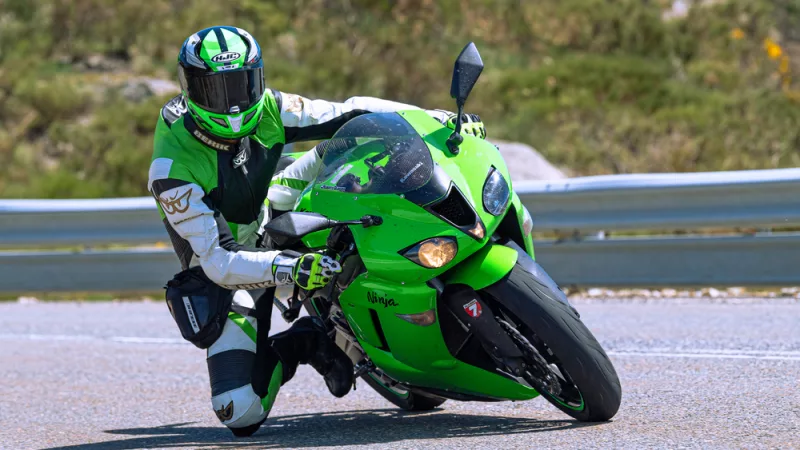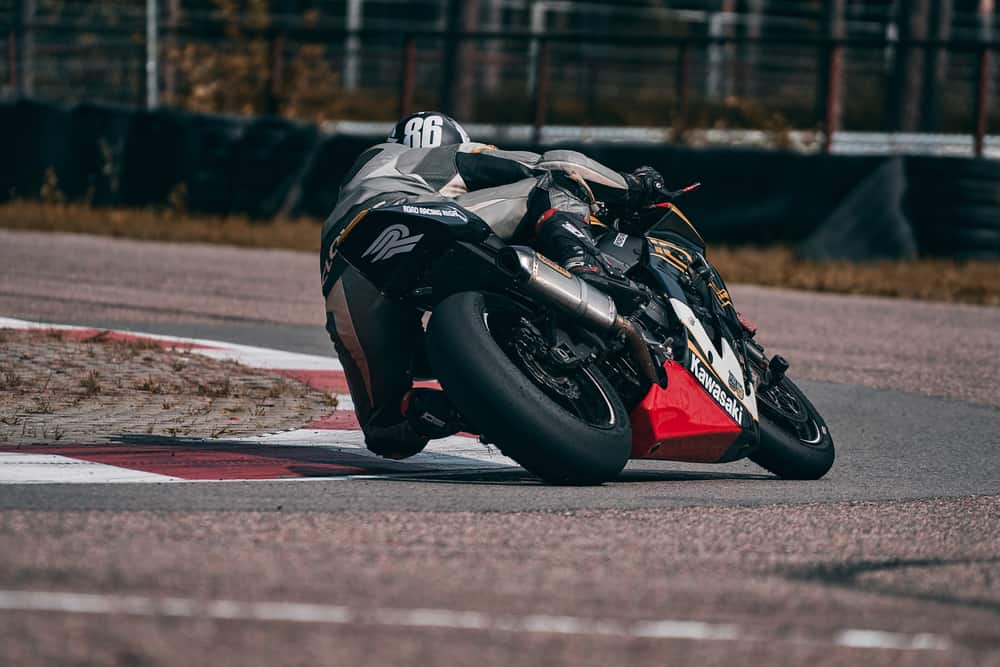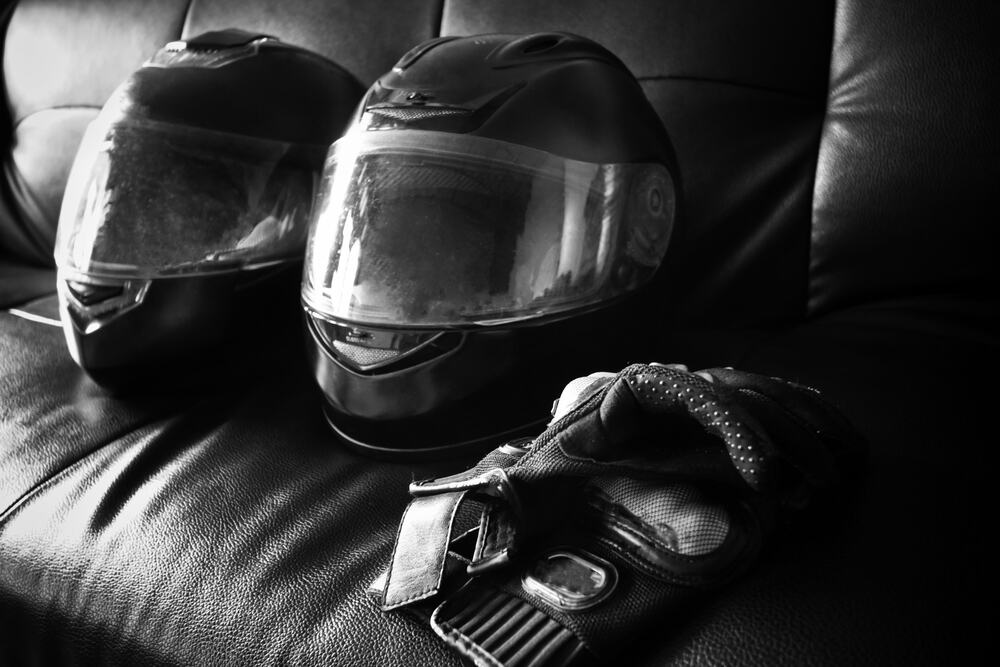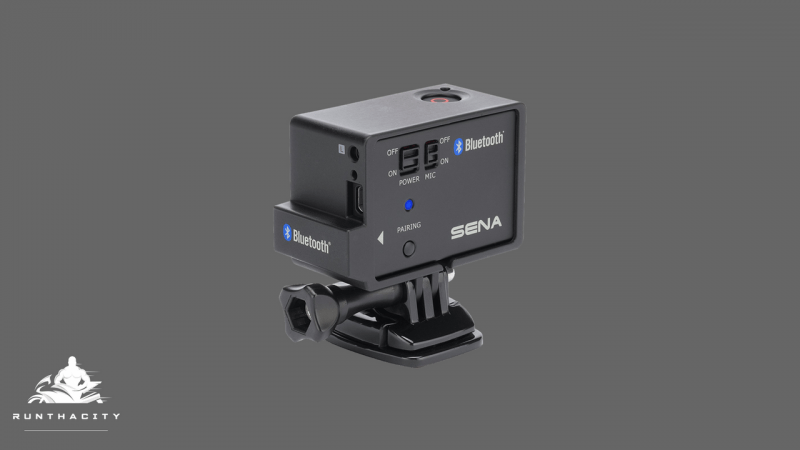Any serious motorcyclist will know the essentials, like wearing appropriate safety gear, proper riding position, turning mechanisms, and how to do a push start. Wait, you don’t know how to clutch start a motorcycle? What happens if you can’t start the motor with the switch? Good thing you’re here. In just a few steps, you can learn how to effectively push start a motorcycle and get riding in no time.
Before You Push Start
There are a few things to keep in mind if you plan on push starting (also called bump starting and clutch starting) your bike. First, push starting isn’t the ideal method, and it sometimes doesn’t work.
Next, if your motorcycle isn’t starting, check some things that sometimes prevent a motorcycle from starting:
- Ignition kill switch – make sure the kill switch is set to the STOP position.
- Fuel level – your fuel gauge could be faulty, so pop the cap and check to make sure you’re not running on E.
- Fuel petcock – if you have a non-EFI bike, make sure the fuel tap petcock is OFF.
- Kickstand – some bikes have an added safety feature that prevents it from starting if the kickstand is down.
- Gear set in neutral – if the gear is engaged, the bike will refuse to start. Do a double-check.
If none of these apply to your situation, then it’s time to push start your bike.
How To Push Start
Follow these steps in the order listed.
Find A Hill
While you could get a few friends to push your motorcycle, you’re not always going to be traveling in a group. When that happens, you need to find yourself a hill. Steep slopes help you get to the proper speed to bypass the start system.
On a flat road? Don’t despair. If you can push the bike at a reasonable speed then jump on and release the clutch, you can still do a push start.
Engage 2nd or 3rd Gear
A lesser known trick to a successful push start is to avoid 1st gear and go straight to 2nd or 3rd gear. Avoid 1st gear entirely if your bike as a high compression engine.
The reason why skipping 1st gear is important is because you could potentially lock the rear tire, which would result in a crash.
Clutch, Release, and Start
Start moving down the hill to get speed while holding the clutch. As you start to gain momentum, release the clutch and press the start button in a seamless motion. Quickly apply some throttle, and the motorcycle should start. As soon as the bike is roaring, engage the clutch.
It’s important to stay in full control of the motorcycle. Please do this as far from traffic as possible, just in case you end up swerving.
If this doesn’t work on the first try, don’t give up. Stop. Reset yourself, and repeat the first three steps again.
Rev That Engine
This is the final step—the most integral. If you don’t immediately rev the engine, the motorcycle will die again. Stay focused.
Depress the clutch slightly and moderately rev the engine. Don’t let it scream. Keep the revving slightly high so the motor doesn’t choke down. The worse case scenario if you don’t rev the motor is that the bike will die, and you don’t want that—especially since you’ll still be rolling down a hill.
Optionally, once you have the engine running, you can switch to neutral and apply the brakes while revving the engine. This will help you stay focused on keeping the engine from choking. This works best if the motorcycle is cold.
Get Riding
Once the engine has warmed up, do a quick ride to make sure everything is working as it should. Remember that your safety is the most important thing when push starting a motorcycle. Be sure to practice the push starting methods a few times before attempting it for real out on the road. You should be wearing protective gear and be away from traffic. If not, you could seriously hurt yourself and others.
That wraps up how to push start a motorcycle. Just follow the steps that have been outlined, commit to safety, and you will soon be push starting like the pros!
Enjoy reading this article? Get more motorcycle tips and tricks by subscribing to my YouTube channel.
You Might also like
-
What Is the Average Cost of Motorcycle Insurance?
Motorcycles are fun, and have become a bit of an American icon representing free spirits, independence and a fun personality. Who hasn’t, at one time, wanted one, or at least to try riding one?
Well, like with any vehicle, you’re going to have to be trained to ride it, and you’re going to need insurance, as with anything on the road. Insurance is a pain, of course. It’s one of those things you shell out hundreds of dollars a year for, and hope to powers above that you never wind up needing once you have it.
It’s necessary. When you’re on the road traveling at speeds of over sixty miles per hour, accidents can and will eventually happen. Humans make mistakes, and some are, to put it frankly, idiots who just drive or ride carelessly. Insurance protects you from said idiots.
Insurance is a necessary evil, so it’s not free. Before investing in your motorcycle, you should do your due diligence regarding what upkeep of your bike is going to cost you. This includes maintenance, plates, tags, your license and, most importantly of all, said insurance.So, how expensive is motorcycle insurance? There’s no clear-cut answer to that, because different companies will vary, and more importantly, factors about yourself will directly, linearly impact price in every situation.
Let’s take some time to talk about these. If you see yourself described in any of these with prices you find painful, it may not be time for a motorcycle yet, or some other luxury may have to be given up.
What’s the Difference?
You’re thinking, you have a car, you know what car insurance rates are like, is there honestly a difference between cars and bikes in this regard? And if so, why?
To answer your first question, yes, there’s a significant difference in all regards between cars and bikes, from obtaining the license, to maintaining it, all the way up to insurance. It’s a horse of a very different color.
As for why? Well, all vehicles are inherently, mostly equally dangerous. How they’re dangerous is a big one. Vehicles can be dangerous to their passengers, of course, and often are. Their bigger danger is inflicting that damage on another unsuspecting driver, pedestrian, or other thing they may collide with.
A motorcycle is more dangerous to its rider(s). Hitting anything stationary like walls, polls, buildings or trees in a car is something you stand a decent chance of surviving, as the giant metal box around you absorbs the shock. Doing so on a motorcycle isn’t so pretty.
You could also fall off one of them doing 60, or be hit by one of the idiots we mentioned earlier whom drive negligently. When a four wheel vehicle hits a motorcycle, it usually does damage the car, though often fairly superficially. The motorcycle and its rider(s) enjoy no such luck. Riding a motorcycle requires far more vigilant operation due to this risk, the dangers of larger vehicles, and a plague of drivers who don’t check for motorcycles.Check for motorcycles, America.
Insurance Pricing
Like we said, due to a lot of variables, there’s no way to predict with one hundred percent certainty what your price would be, even with a lot of criteria, as these prices tend to be calculated at the time by an agent, due to the impact of variables changing from time to time.
Thus, the pricing below is an average, or generality. They’re good enough to ballpark whether or not you have the budget to ride a motorcycle legally.
Cruiser or Touring Motorcycle
- 25-60 yo, Good Driving Record, Liability Only – This going to be the least expensive scenario, as liability is the minimal legal coverage possible, just as with home or car insurance. It’s not hard to qualify for this insurance if you have a clean or at least good driving record. It may be possible to get it cheaper through your car insurance provider, if you’re in good standing with them as a customer. Est. Price: $100-$500/year
- 25-60 yo, Good Driving Record, Full Coverage – Chances are, you’ll want to protect what you love, and that means additional coverage for repairs, replacements, theft and other such concerns, not just covering you legally in an accident. This makes the price go up a good bit, but for this particular customer bracket, less than you might expect. This too may be cheaper through your existing auto insurance provider. You may also cheapen it further via installing approved anti-theft devices, purchasing approved safety gear, and so on. Est. Price: $400-$800/year
- 25-60 yo, Bad Driving Record, Full Coverage – A bad record can really haunt you with insurance. Not only can it be hard to get liability (due to having a record of being one), but the price of the full coverage will be considerably higher. We can’t really even give you a reliable estimate here, because it all depends on which provider you approach, what kind of bad driving record it is that you have, and what kind of mood the agent is in when they quote the price. Suffice it to say, it will be very expensive, possibly unmanageably so, and there aren’t really any lifehacks to make it cheaper. Et. Price: Impossible to guess, but tremendously high!
Crotch Rocket Sports Motorcycle
- 16-24 yo, Good Driving Record, Full Coverage – A 16-year-old probably shouldn’t be on a motorcycle, especially not a crotch rocket of all things. At that age, if motorcycles are something they want to pursue as a hobby or way of life, they should be learning fundamentals on dirt bikes. However, in some states, it is legal under guardianship, and at 18, anyone can legally drive anything if they earn the license to do so. Inexperience (which for motorcycles often takes liability only off the table) raises prices quite a bit, and full coverage is itself quite expensive. Parents might be able to get prices lower if policies give them some of the responsibility, thus lowering the premiums a little, but really, this is just going to be expensive, no matter how you slice it. Est. Price: $900-$1200/year
Are you a long-time rider just seeing if you can find a better price for your motorcycle insurance? Are you someone who’s planning to get into biking? Did these prices make you rethink how interested you were? I’m curious to know, so subscribe to me on YouTube, and let me know somewhere in the comments if these prices are obscene, about what you expected, or quite a bit lower than you feared. Then stick around, if you still want to ride, I’ve got some great content to get you started with one of America’s great hobbies!
-
Mastering the Ride: How to Prevent and Treat Common Sportbike Injuries
The exhilarating rush of leaning into a corner, the wind whipping through your hair, and the undeniable thrill of commanding a powerful machine – these are just a few of the reasons why sportbikes hold such a special place in the hearts of many riders. However, with the incredible performance and sharp handling of these motorcycles comes a heightened degree of risk for injuries.
This article delves into the world of sportbike injuries, equipping you with the knowledge and practical steps to navigate the journey safely. We’ll explore the most common injuries associated with sportbike riding, delve into preventative strategies, and shed light on treatment options. By understanding the risks and taking necessary precautions, you can continue to enjoy the thrill of the ride while minimizing the chances of encountering these injuries.
Key Takeaways:
- Common sportbike injuries include wrist/hand, shoulder, neck/back, and leg/foot injuries.
- Prevent injuries through proper gear, ergonomic bike setup, strengthening exercises, and safe riding practices.
- Seek immediate medical attention for any suspected injury.
- Treatment options include rest, pain management, physical therapy, and surgery (if needed).
- Prioritize safety by learning continuously, maintaining your bike, and riding with responsible individuals.
Comparison Table: Common Sportbike Injuries vs. Preventative Measures
Injury Preventative Measures Wrist and Hand Sprains/Fractures Wear protective gloves, maintain proper grip on handlebars, avoid over-torquing controls. Shoulder Strains/Dislocations Strengthen core and shoulders, maintain upright posture, avoid locking elbows. Neck and Back Pain/Herniated Discs Maintain neutral posture, avoid hunching, strengthen core muscles, take regular breaks on long rides. Leg and Foot Sprains/Fractures Wear sturdy motorcycle boots, maintain proper footpeg placement, avoid excessive shifting or braking. Comparison Table: Common Sportbike Injuries vs. Preventative Measures
The Landscape of Sportbike Injuries: Understanding Common Risks
The unique design and riding style of sportbikes expose riders to specific physical demands and potential hazards. Let’s delve into the most prevalent forms of injuries encountered by sportbike enthusiasts:
1. Upper Body Injuries:
-
Wrist and Hand: The aggressive riding position, coupled with the potential for falls, makes these areas particularly vulnerable. Common injuries include sprains, fractures, and carpal tunnel syndrome, caused by repetitive strain on the nerves and tendons.
-
Shoulder: Similar to wrist and hand injuries, the shoulders bear the brunt of the forward-leaning posture and potential impact in a fall. Dislocations, strains, and rotator cuff injuries are common occurrences.
-
Neck and Back: Long rides with a hunched posture can put immense strain on these areas, leading to pain, stiffness, and even herniated discs. Improper core engagement further exacerbates the situation.
2. Lower Body Injuries:
- Leg and Foot: While less frequent than upper body injuries, leg and foot injuries can happen in accidents or due to repetitive motions while shifting and braking. These can include ankle sprains, fractures, and nerve damage, causing pain and limiting mobility.
3. Additional Injuries:
- Head Injuries: Although mitigated by wearing a helmet, head injuries can still occur in severe accidents, highlighting the importance of choosing and using a DOT-approved helmet consistently.
4. Psychological Trauma:
- Accidents, even minor ones, can cause emotional distress and even post-traumatic stress disorder (PTSD) in some individuals. Seeking professional help is crucial if you experience emotional difficulties after an accident.
Safeguarding the Ride: Proven Strategies for Injury Prevention
Knowing the risks is essential, but the true power lies in taking proactive steps to prevent them. Here are some key strategies you can implement:
1. Gear Up for Protection:
- Helmet: Invest in a high-quality, DOT-approved helmet that fits snugly but comfortably. Replace it every five years or after any significant impact.
- Protective Clothing: Opt for abrasion-resistant leather or heavy textile gear that covers your entire body. Leather offers superior protection but can be warmer in hot weather.
- Footwear: Wear sturdy motorcycle boots that provide ankle support and good grip on the footpegs.
2. Ergonomics Matter:
- Bike Fit: Ensure your bike is adjusted to your specific body measurements. This includes proper handlebar height, seat position, and footpeg placement. An ergonomically correct setup reduces strain on your body and allows for better control.
- Maintaining Posture: Maintain a neutral, upright posture while riding. Avoid hunching your back or locking your elbows, as this can lead to fatigue and increase the risk of injury.
3. Strengthen Your Body:
- Targeted Exercises: Regularly strengthening your core, back, and shoulders improves your riding posture and endurance. This enhances control and reduces the risk of fatigue-induced errors.
- Stretching: Don’t underestimate the power of stretching. Regularly stretching improves flexibility and range of motion, reducing the risk of strains and muscle fatigue.
4. Master Your Skills:
- Safety Courses: Enroll in a motorcycle safety course to learn proper braking, cornering, and maneuvering techniques. These courses hone your skills and equip you with the knowledge to handle challenging situations safely.
- Practice Makes Perfect: Regularly practicing in a controlled environment builds confidence and refines your skills, allowing you to react calmly and effectively in real-world situations.
5. Listen to Your Body and the Road:
- Fatigue Factor: Avoid riding when you’re tired or under the influence of alcohol or drugs. Fatigue impairs judgment and reflexes, significantly increasing the risk of accidents.
- Stay Alert: Be mindful of your surroundings and anticipate potential hazards. Watch out for other vehicles, road conditions, and weather changes.
- Take Breaks: Schedule regular breaks on long rides. Get off the bike, stretch your legs, and rehydrate to prevent fatigue and maintain focus.
Navigating Recovery: Treatment Options for Sportbike Injuries
Despite taking all necessary precautions, accidents can still occur. If you sustain an injury while riding, immediate medical attention is crucial. A qualified healthcare professional can accurately diagnose the severity of the injury and recommend the most appropriate treatment course.
Here’s a glimpse into some common treatment options for sportbike injuries:
1. Rest and Immobilization:
- Depending on the nature and severity of the injury, the doctor might recommend rest and immobilization. This allows your body time to heal and prevents further damage. Immobilization may involve casts, splints, or slings.
2. Pain Management:
- Managing pain is essential for promoting healing and comfort. This may involve medication like pain relievers, anti-inflammatory drugs, or muscle relaxants. Topical pain relief options like creams and gels may also be used.
3. Physical Therapy:
- Physical therapy plays a crucial role in regaining strength, flexibility, and range of motion after an injury. A physical therapist will create a personalized rehabilitation program that includes exercises and modalities like ultrasound or electrical stimulation to facilitate healing and recovery.
4. Surgery:
- In some cases, surgery might be necessary to repair fractures, torn ligaments, or other damage that cannot heal on its own. This is a complex decision, and the doctor will discuss the risks and benefits thoroughly with you before proceeding.
5. Emotional Support:
- Don’t underestimate the impact of emotional trauma after an accident. Consider seeking professional help from a therapist to address any anxiety, depression, or post-traumatic stress disorder (PTSD) that you might be experiencing.
Beyond the Finish Line: Embracing a Culture of Safety
Beyond the Finish Line: Embracing a Culture of Safety
The exhilarating world of sportbike riding demands a commitment to safety. By adopting the strategies outlined above, you minimize the risks associated with this exhilarating activity. Remember, the thrill of the ride is amplified when coupled with responsible and informed practices.
Here are some additional points to consider:
- Community Connection: Surround yourself with responsible riders who prioritize safety. Sharing experiences and learning from others can reinforce safe riding practices.
- Continuous Learning: Continuously educate yourself on safety advancements, proper riding techniques, and hazard avoidance strategies.
- Regular Maintenance: Ensure your bike is in proper working order. Regular maintenance checks and addressing any potential issues before hitting the road are crucial for safety.
Riding a sportbike is an activity that requires a balance of skill, awareness, and responsibility. By understanding the potential risks, implementing preventive measures, and seeking professional help when necessary, you can maximize your enjoyment on two wheels while prioritizing the most important aspect – your safety. Remember, the journey is just as important as the destination, and safe riding practices ensure that you can continue to enjoy the thrill of riding for years to come.
6 FAQs: Gearing Up for Safe Sportbike Riding
-
What type of helmet should I wear?
- Always wear a DOT-approved helmet that fits snugly but comfortably. Replace it every five years or after any significant impact.
-
Is leather gear always necessary?
- While leather offers superior abrasion resistance, heavy textiles can also provide adequate protection. Choose gear that fits well and offers sufficient coverage.
-
How often should I stretch before and after riding?
- Perform dynamic stretches before riding to warm up your muscles and static stretches after riding to improve flexibility and prevent stiffness.
-
Can I skip safety courses if I’m an experienced rider?
- Safety courses are valuable for all riders, regardless of experience level. They can help you refine your skills, learn new techniques, and refresh your knowledge on safe riding practices.
-
How long should I rest after a minor injury?
- Follow your doctor’s instructions regarding rest and activity limitations. Ignoring this advice can hinder healing and increase the risk of complications.
-
When should I seek professional help for emotional trauma after an accident?
- If you experience any emotional distress, anxiety, depression, or difficulty coping after an accident, don’t hesitate to seek professional help from a therapist.
-
Sena GP10 Bluetooth Pack for the GoPro Review
If you have always wanted to record turn-by-turn commentary on your rides and you use a GoPro Hero 3 or 4 to record, the Sena GP10 Bluetooth pack is a must-have accessory. The “BacPac” allows you to record narration in real time using Sena’s “Ultra HD Voice Recording” mode or the “Normal” mode. You can even combine voices from other intercom users so the entire conversation can be used as an overlay voice-over. Download the Sena GP10 User Guide Here










